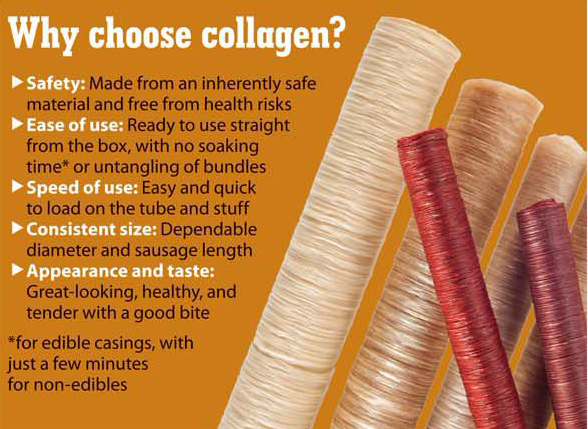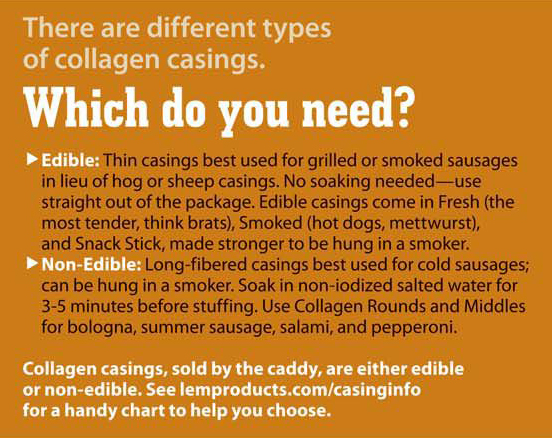« Back |
Home/Landing Page - Understanding Collagen Casings
Understanding Collagen Casings
So, what exactly are collagen casings? The short answer is that they're great ways to package your sausage, and that they come in both edible and
non-edible versions. You can learn all about them below, or go straight to our Sausage Casings and begin your shopping journey.
Sausages were originally made by stuffing a meat mixture into the intestines of a pig, sheep or other animal. When sausage manufacturers wanted a faster, more reliable way of making a high quantity of sausage - and when the material became widely available a half century ago - they switched to collagen.
A natural protein product, collagen comes from a layer of beef hide, removed and refined. The more refined the processing, the more tender the casing.
Collagen casing sausages are easy to cook, a good value and look great. Most important, they provide a tender bite and a fine "knack" - that familiar snap sound you expect when you bite into the perfect sausage.
Tips & Tricks for Collagen Casings
- Don't over twist - you only want 1 1/2 - 2 twists.
- Rehydrate old casings overnight in a cooler.
- Never overstuff collagen casings beyond recommended capacity, or be ready to clean up a mess.
- Be mindful of the humidity in your smoker or oven. Low humidity translates to tough casings.
Take Care of Your Collagen Casings
- Do not soak edible casings! Stuff edible casings dry. Soak non-edible casings 3-5 minutes in non-iodized salted (1 cup per gallon) water.
- Save the bag. Return unused casings to the zip-lock bag.
- Seal or tape the bag, as the casings must not dry or lose moisture. Refrigerate bag or place in a cooler so the casings retain moisture.
- Do not store your casings unsealed. You won't be able to use the casings once they dry out.






